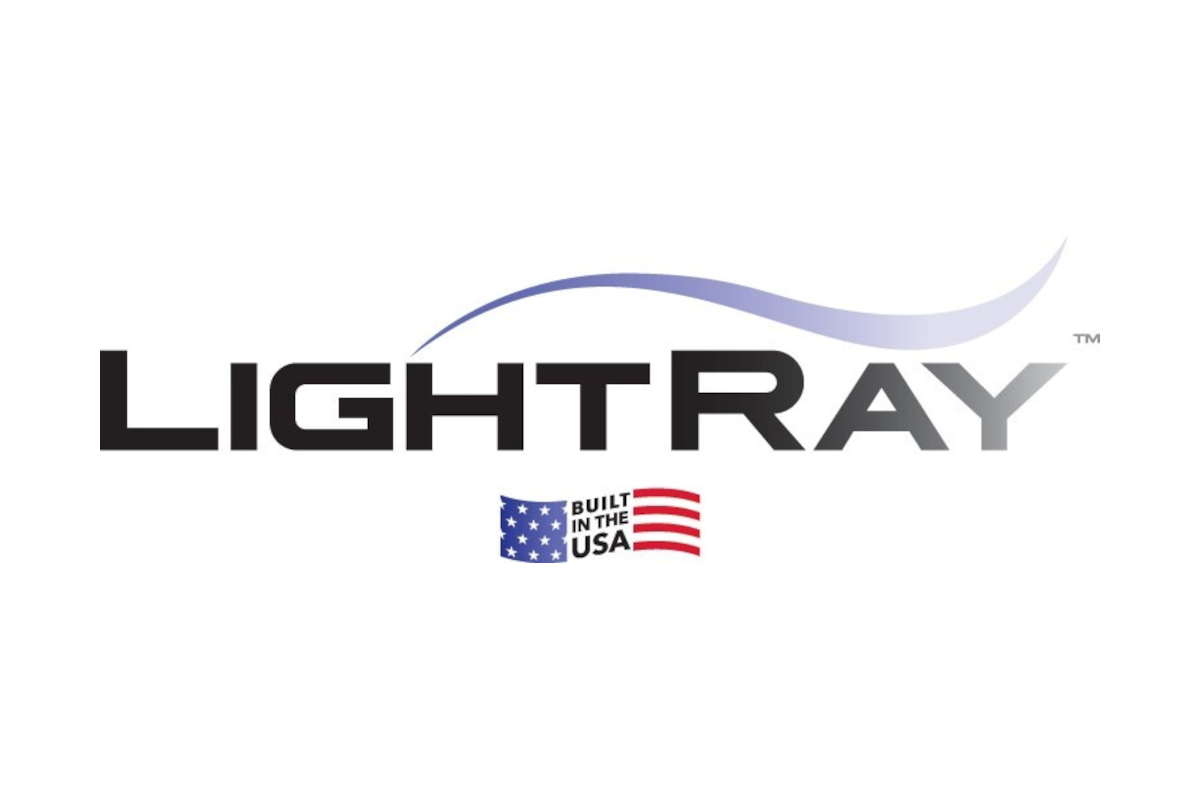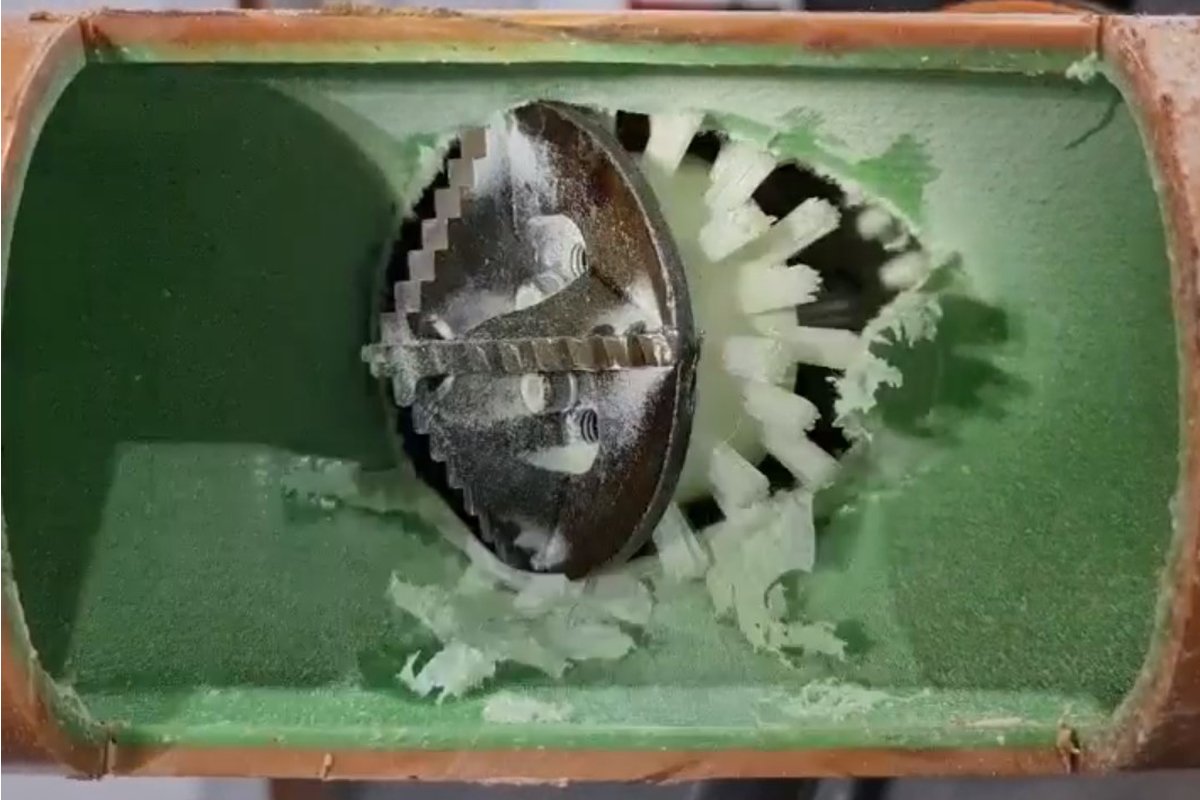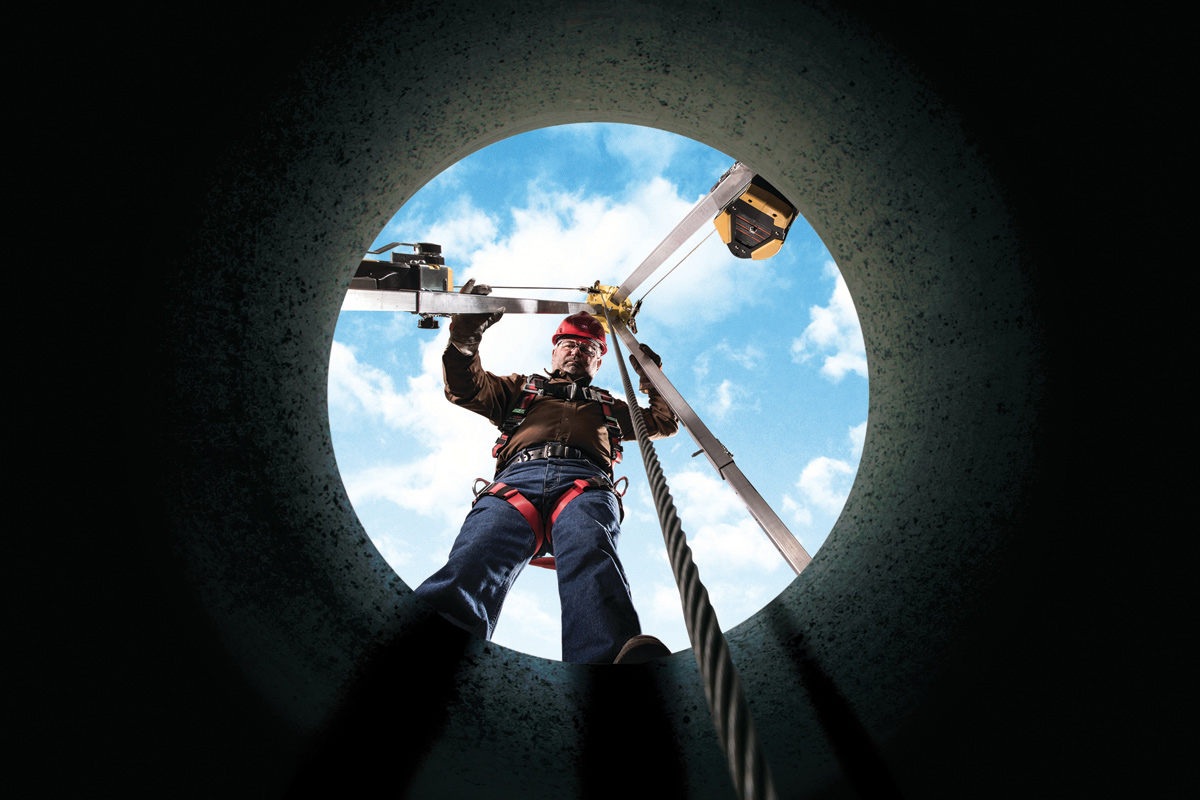
Taking on Gravity Sewers
November 6, 2015
In the years I’ve been writing about horizontal directional drilling (HDD) projects, I have found one sure truth when it comes to HDD contractors: They love to tackle the difficult projects. Give them a challenging job to handle, and they’ll never forget it — remembering every last head-scratching, pivotal detail.Gravity sewer projects can fall into such a category, as maintaining line and grade throughout the bore is critical to its success — especially if working under tight circumstances — and extremely challenging to do. The bores may not be the longest in the HDD industry but they come with a level of difficulty and expertise that forces contractors to up their game.
Aaron Enterprises, based in York, Pa., has taken on a number of gravity sewer HDD projects over the last 10 years and, while they do not specialize in them, the contractor does know what will make or break such a project. One project stands out above the others in recent years, due to its limited line and grade specifications: Sanitary and Sewer Pump Station for Manchester Township (Pa.) Municipal Authority.
This project involved a 846-ft bore of 10-in. HDPE pipe, with a 1 percent design grade slope. The HDD-installed section of sewer line would replace the need to use open cut and construct a pumping station for the new line. This portion of the line ran manhole-to-manhole, which were built at a specific elevation due to the upstream and downstream sewer runs.

Using HDD is not always feasible for all gravity sewer projects, even though that is what the design engineer and/or owner would like, says Aaron Enterprises general manager Eric Harlacher. Several factors come into play before Aaron Enterprises agrees to sign on for an HDD gravity sewer project.
“That is tough,” Aaron Enterprises general manager Eric Harlacher simply says of the 1 percent. “The 1 percent slope was the designated design gravity sewer flow that the engineers wanted due to the pipe size [being installed] and the capacity that the sewer was going to run at.”
The project took place in Manchester Township, Pa., as part of a new sewer installation project to increase sewer capacity. The HDD portion was just one small section of the overall project and was located in rural, yet residential area of the township, which meant dealing with frequent traffic.
The project posed several challenges for the HDD contractor, beyond the 1percent slope. Harlacher notes in addition to the tight line and grade specifications, the project also came with drilling in a hard rock formation and a limited workspace and right of way areas.
Harlacher says the depth of cover for the pipe ranged from 12 to 35 ft deep during the bore. Due to the depth of the sewer that was to be installed, the launching and receiving pits had to be constructed at a certain elevation to maintain the grade of the pipe; the pits were built 16 to 18 ft deep. The project took three months to complete with the drilling taking about a month and a half. The work took place during early spring, with a good amount of time spent early on with construction the entry and exit pits.
Once the HDD drill was placed in the launching pit (an American Augers 50,000-lb rig), it was time to drill. The hard rock formation of sandstone and bedrock was a challenge in of itself, as it did not remain the same throughout the course of the bore. The crew drilled toward a hill at a drilling depth of 35 ft.

Using HDD is not always feasible for all gravity sewer projects, even though that is what the design engineer and/or owner would like, says Aaron Enterprises general manager Eric Harlacher. Several factors come into play before Aaron Enterprises agrees to sign on for an HDD gravity sewer project.
“If I were to rate this project on a difficulty scale of 1 to 10, it was definitely an 8-plus. The rock we went through, we had trouble trying to stay on line and grade but were able to do it. We definitely had to hit the target 846 ft out to make sure the sewer line would work as proposed,” Harlacher says. “If we would have had a 3 to 5 percent slope to work with, let’s say, it gets a little easier because you have a little more wiggle room. You have no wiggle room with 1 percent.
“The engineers designed the sewer system for specific set of parameters and it just so happened that the area where the directional crossing was they needed a 1 percent grade for the entire sewer system to work. That 1 percent is relatively flat. That was really tight parameters,” he says.
Harlacher also notes that the fluid management during the project was also critical to its success. “We really had to watch our mud [during the drill],” he says. “You have to control your mud in a job like this so you can remove the spoils and cuttings effectively. We created a mud holding area on our launch and exit sides to maintain fluids from the bored hole.”
Harlacher explains that using HDD is not always feasible for all gravity sewer projects, even though that is what the design engineer and/or owner would like. Several factors come into play before Aaron Enterprises agrees to sign on for an HDD gravity sewer project. “HDD gravity sewers are few and far between,” he says. “We are very selective in what we consider a potential HDD gravity shot. There are jobs we’ve looked at in the past that people have said are gravity sewer shots and we’ve said, ‘Probably not.’ There is a lot that goes into it, such as the ground conditions, overall location of the jobsite, design specifications, topography — they all could either make or break a project.”
Sharon M. Bueno is managing editor of Trenchless Technology.





